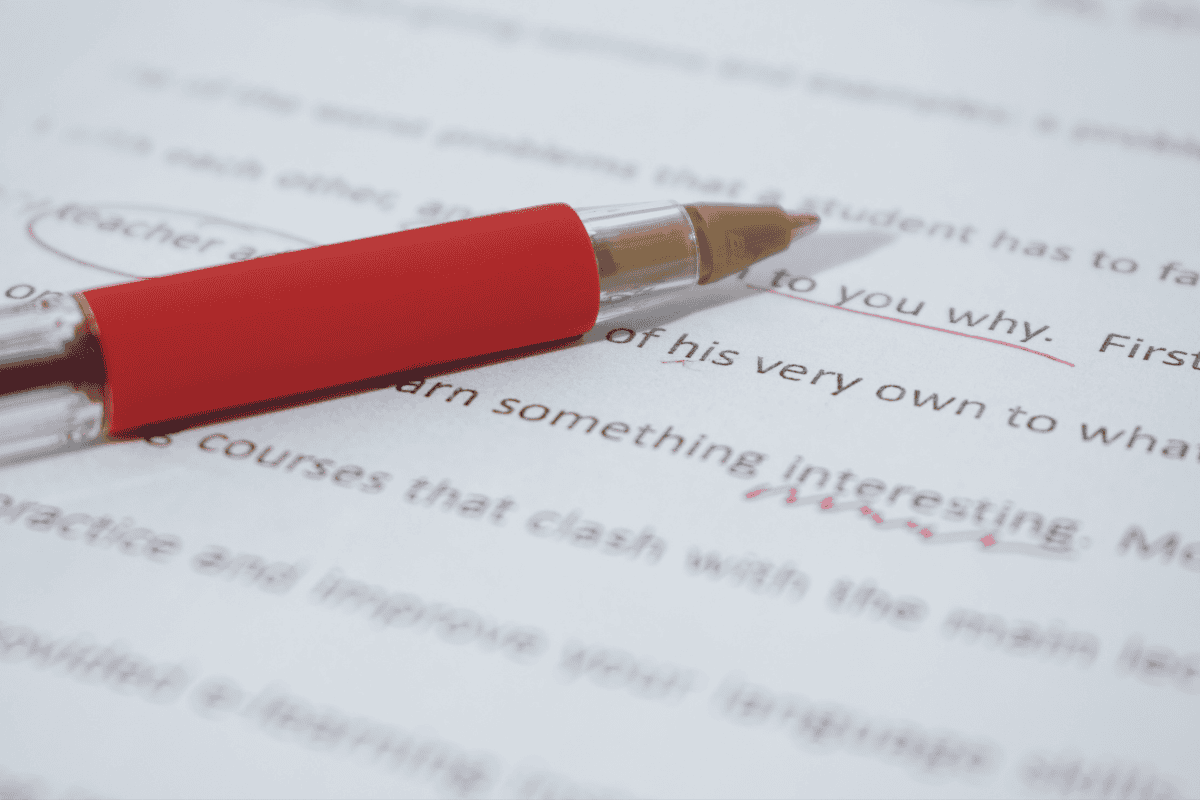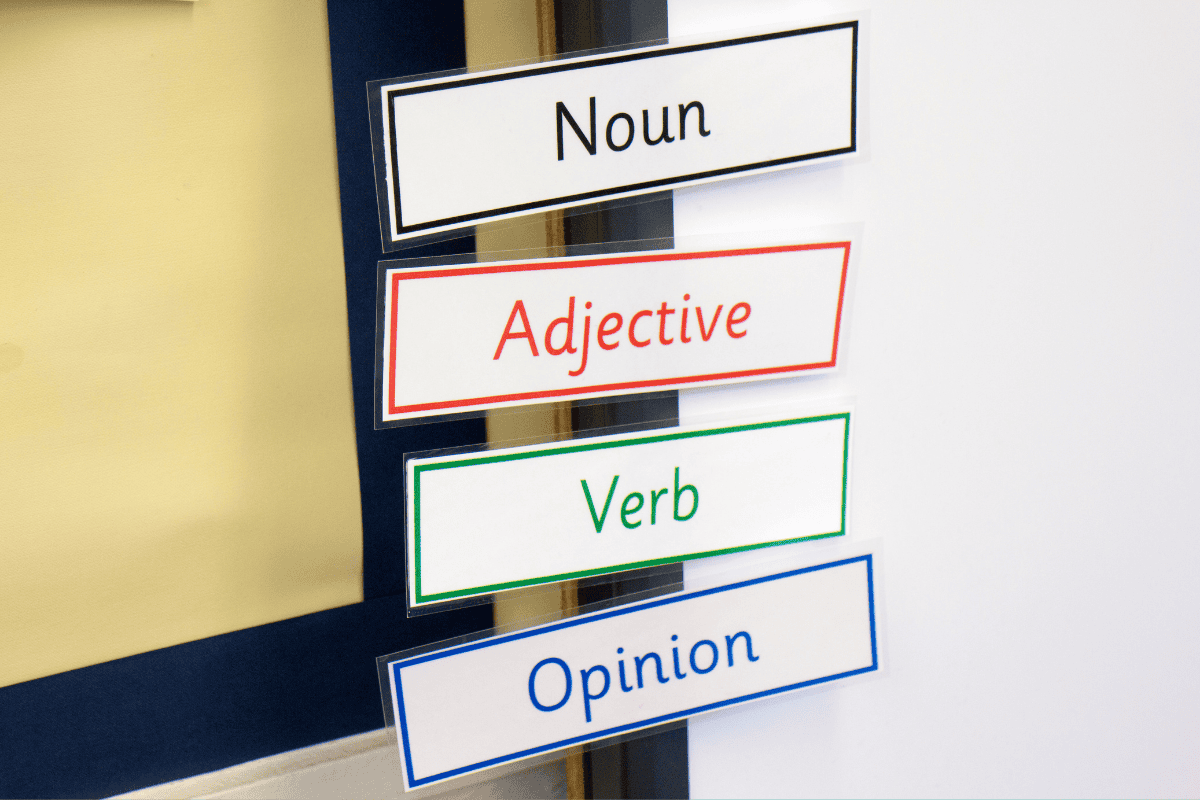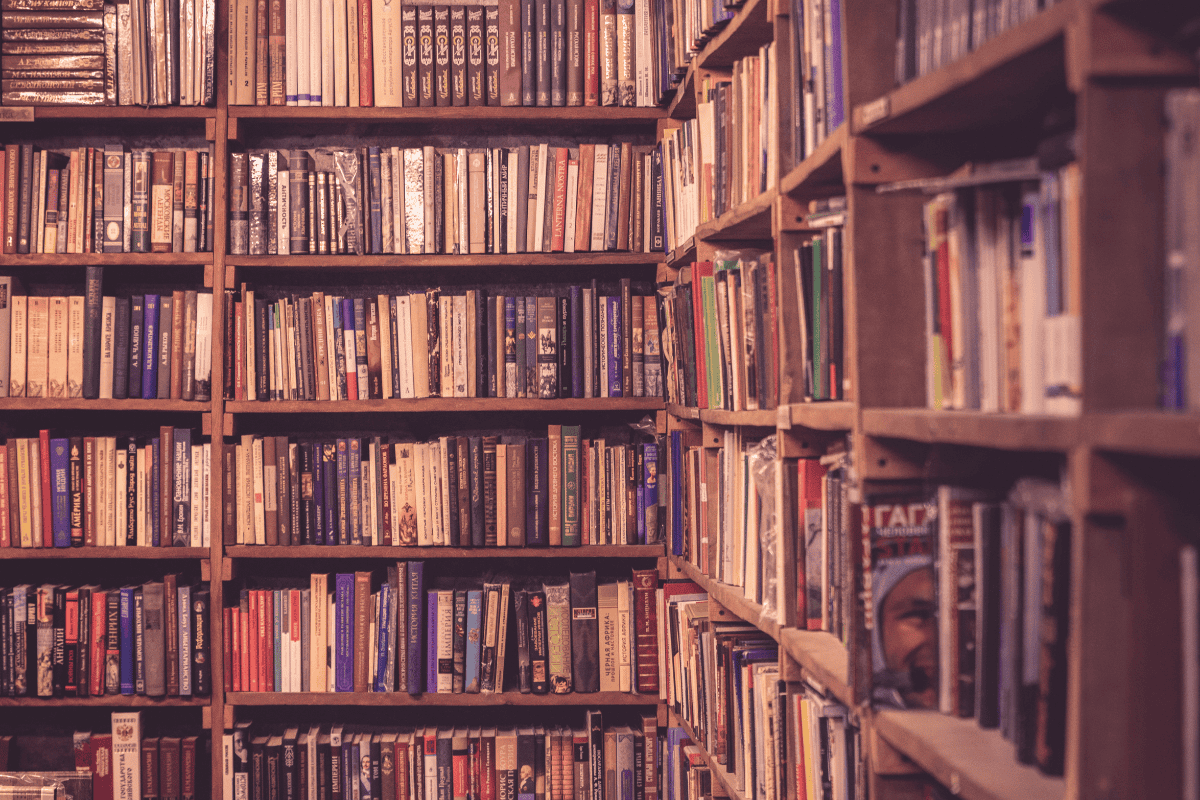Year 8 English might seem like a big step up from Year 7, but no worries — we’ve got your back!
In this article, we’ll walk you through what you and your child can expect from the English curriculum for Year 8.
Below, we’ve outlined the key learning areas and goals of the curriculum, the types of texts that your child will engage with, and the learning standards that they’ll achieve by the end of the year.
We’ll also outline some types of assessments that your child will likely encounter (although this will vary across the board according to school preference).
Let’s jump right into it!
Language, Literature and Literacy in the Year 8 English Curriculum
Assessment Types in Year 8 English
Standards for Year 8
Looking for English guides for other year groups?
If you have a child in a different year group to Year 8, we’ve also got English guides for them! Have a look at our guides for the various year groups:
Year 1 | Year 2 | Year 3 | Year 4 | Year 5 | Year 6 | Year 7 | Year 9 | Year 10
Language, Literature and Literacy in the Year 8 English Curriculum
The curriculum is broken down into three interwoven components:
- Language
- Literature
- Literacy
Although separated, they still inform and are informed by the other sections, and your child will use skills learned in each section in conjunction with other skills to progress throughout the year.
If you haven’t checked them out already, there are also major curriculum changes coming to Years 7-10 Maths in NSW starting from 2024!
Let’s give them a look individually now!
Language
Underpinning the entire study of English is an understanding of the English language, and its influence on and by other languages. Your child will be introduced to variances in English, including its inclusion in other languages (such as ‘Singlish’, or Singaporean English), and the etymology of particular words (tracing words back to their French, Italian, Latin, and Greek roots).
Teachers will also guide classes through an exploration of English in different communities! This is really important, because it allows students to understand how conventions of speech differ according to group, identity, and demographic.
This exploration of ‘dialects’ will later be used to inform context and identity in the Literature section of the syllabus.
Text Structure and Organisation
Your child will then be able to use all of these skills to understand text structure and organisation! By analysing media and literary texts, students explore how language is manipulated to inform meaning, depending on the medium and mode of communication, as well as the perspective of the composer. They’ll also delve into how the concept of irony can reveal certain aspects of texts, including dark or humorous tones.
Teachers will also extend students’ knowledge of punctuation conventions, including (semi)colons, dashes, brackets, and ellipsis, as well as grammatical conventions. They’ll also reiterate the importance of nominalisation (forming nouns from verbs and adjectives).
In turn, students will appreciate how these conventions allow for greater cohesion across texts, including by linking sentences and paragraphs, and denoting certain performance directions for sonnets and plays.
Expressing and Developing Ideas
By analysing language, students will also understand the relevance of controlling language in informative, imaginative, and creative texts.
Your child will learn how language, specifically vocabulary and tone, is used to influence audiences in speeches, films, and literature, often in conjunction with persuasive and emotional techniques. This is tied into an exploration of visual and multimodal texts, and the ways that they can shape meaning by combining images and language with technical elements (such as position, size, colour, angle, and point of view).
After achieving a greater understanding of style, purpose, and control, your child will put this into practice by writing their own texts and paragraphs, explaining their personal viewpoints on areas, and utilising literary conventions to make cohesive blocks of text!
Over the course of the year, your child will therefore learn to:
- Understand the origins of the English language, and its influence both on and by other languages;
- Show how language informs text structure and organisation, and the relevance of conventions to cohesion and arrangement; and
- Understand language as a tool in conjunction with visual techniques.
Literature
The texts chosen over this year will support and extend your child by expanding on what they learned in Year 7, including their knowledge of narratives, procedures, performances, reports, and discussions.
Your child will also continue to engage with a range of multimodal texts, which are texts made up of more than one form, such as newspapers, graphic novels, and digital texts. Some new aspects that your child will be introduced to include:
Imaginative texts
Drawn from realistic, fantasy, speculative fiction, and historical genres, Year 8 imaginative texts delve into non-predictable plots and non-stereotypical characters. To encourage your child to consider issues from more than one perspective, the curriculum includes an exploration of texts from Aboriginal and Torres Strait Islander and Asian cultures.
Over the course of the year, your child will be introduced to more mature themes, including interpersonal relationships and ethical dilemmas, and explore issues in both real-world and fictional settings.
Informative texts
Specialising on certain topics, these present technical information from various sources. Your child will be introduced to more complex text structures and components, including chapters, (sub)headings, tables of contents, indexes, and glossaries.
Now, let’s take a look at how your child will approach these texts. The Literature syllabus is broken down into four parts: literature and context; responding to literature; examining literature; and creating literature.
Literature and Context
Firstly, teachers will guide students through understanding how context, or the viewpoints, ideas, and histories of particular texts, influence their subject matter. By exploring a range of texts from different cultures, students are encouraged to appreciate how the perspectives presented by authors both reflect and challenge the values of individuals and groups.
Teachers will engage classes in discussion and encourage students to explain their interpretation of different viewpoints. Students will also compare attitudes and ideas in texts to their own, examining the way that different contexts lead to different opinions, even on the same subject.
Through an exploration of film and other texts, your child will also explore the interconnectedness of Country/Place, People, Identity and Culture.
In analysing film, students broaden their understanding of film techniques, including image, soundtrack, and narrative control, and the effect they have on storytelling.
Responding to Literature
Using these explorations, students will then be able to recognise similarities and differences between different types of texts. By combining this with their knowledge of context, students explore how audience and purpose influence a composer’s style, and recognise how this leads to differing viewpoints about the world, cultures, people, and ideas.
Your child will also be re-introduced to language analysis, which is imperative for greater analysis in English! In doing so, they’ll understand how different combinations of language patterns, images, and words are used to influence readers to interpret different texts in different ways.
They’ll also interpret and analyse language choices, sentence patterns, dialogue, and other language features and assess how each one impacts the meaning and tone of a text. In doing so, students understand how and why authors make particular choices, which is relevant for their own creation of texts.
Examining and Creating Literature
Finally, your child will put all of this into practice by presenting their reflections on texts, and creating their own! In group and class discussions, your child will be encouraged to discuss the merits of literary texts, share their personal viewpoints on the content they’ve studied, and clarify other students’ perspectives.
Importantly, they’ll be asked to justify their personal stance, enhancing their analytical and debating skills! Students will then use this analysis and the visual, literary and language techniques that they’ve accumulated over the course of the year to create their own literary texts.
These will include re-imaginations of texts, original works, and analytical essays. This range allows students to experiment with different features, narrative structures, meaning and themes, perspectives, and combining visual and digital elements to tell a story.
Over the course of the year, your child will also take trips to the theatre! Students will be able to create and perform short plays that make use of various techniques (music, dialogue, and stage props) to create atmosphere and enhance the drama of performances.
To summarise, the Literature section of the syllabus is designed to:
- Introduce your child to a broad variety of text types and forms;
- Enhance their understanding of context, and its relevance to audience, purpose, and textual structure and construction;
- Expand on their knowledge of language features and visual and digital techniques; and
- Allow your child to use these skills to formulate their own opinions, analyses, and texts.
Literacy
The Literacy component of the syllabus ties together the first two sections, and deepens your child’s understanding of their relevant areas.
Using their new knowledge of the English language, they’ll be able to analyse its change over time (for instance, from Shakespeare’s time to modern day dialects), and how technology has influenced language (consider ‘internet slang’).
They’ll be able to comprehensively analyse how text structures and features vary according to purpose and context, and use comprehension strategies to interpret and expand on the texts that they’ve explored. Teachers will introduce your child to the analysis of non-fiction texts, and guide them through concepts of validity and credibility of sources.
Crucially, this will enable your child to sift through texts to find evidence which supports an author’s point of view, and make judgements regarding the reliability of the information presented based on this investigation.
Class Interaction
Your child will also have plenty of opportunities to engage in class discussions! In interacting with others, students will be able to interpret nuances of meaning in both written and spoken texts, and inform their opinions based on peer reactions.
Your child will also be able to use evidence to present their reflections on texts, and plan, rehearse, and deliver these presentations to the class. In doing so, students are enabled to practise using voice and language conventions to suit different situations, including modulating volume and tone, and experimenting with music, images, and sound effects for specific purposes.
This will also allow them to order their thoughts in the most appropriate way, and enable them to reflect on different viewpoints by drawing comparisons between their opinions and those presented in texts.
How Your Child Will Use Their Literacy Skills
This will all culminate in the creation of your child’s own texts! Over the course of the year, students become more fluent in different ways of creating texts, including digital software, so that they have a range to choose from in creating their own works.
Eventually, your child will be able to use a mix of visual, literary, and digital formats and choices to raise issues, report events, and advance their opinions! In doing so, they’ll become engaged members of their classes, and be able to experiment with their skills to best showcase their ideas.
In summary, this curriculum enables your child to:
- Extrapolate on language by assessing its previous and continuing changes;
- Engage in discussion, and present their ideas to their fellow classmates using a wide range of presentation techniques; and
- Create their own visual, literary, and digital texts by using multimodal elements and different modes of communication.
Assessment Types in Year 8 English

Assessment types vary across schools, but your child will be assessed on their ability to construct the following informative, imaginative, and persuasive texts:
- Discussions;
- Narratives;
- Performances;
- Procedures; and
- Reports.
Below, we’ve attached Sample Portfolios to give you an idea of the standards your child should achieve:
Achievement Standards for Year 8 English
Achievement standards are broken down into two forms of measurement: Receptive Modes and Productive Modes. These two measurements allow teachers to assess your child’s development and progress in English over the year.
Receptive Modes
These standards target your child’s reading, listening, and viewing skills. By the end of Year 8, your child should be able to:
- Understand how the purpose of a text influences its language mode, structure, and composition;
- Critically analyse and interpret texts, including by questioning the reliability of sources;
- Describe how authors use language features, images, and vocabulary to represent different ideas and issues; and
- Analyse how events, situations, and people are represented from different viewpoints.
Productive Modes
These assess your child’s speaking, writing, and creating capacities. Over the course of the year, your child will learn the skills to:
- Explain how particular language choices can be used for particular purposes and effects, and to influence audiences;
- Understand how language, combined with other literary forms and features, can be used to express ideas in new ways;
- Use language to create texts that suit different purposes and audiences;
- Demonstrate understanding of grammar, spelling, and punctuation, and choose vocabulary to suit particular effects; and
- Make presentations about their findings, and contribute their thoughts and opinions to class and group discussions.
And that’s it from us! Head here for the full curriculum. We wish you and your superstar Year 8 good luck for the year ahead!
Looking for some extra help for your child with Year 8 English?
We have an incredible team of English tutors and mentors!
We offer tutoring and mentoring for students in Years K-12 in a variety of subjects, with personalised lessons conducted one-on-one in your home or at one of our state of the art campuses in Hornsby or the Hills! Ace Year 8 English with tutoring in Parramatta, awesome tutoring in Penrith, engaging tutoring in Hurstville! We also offer holistic North Shore English tutoring!
We’ve supported over 8,000 students over the last 11 years, and on average our students score mark improvements of over 20%!
To find out more and get started with an inspirational English tutor and mentor, get in touch today or give us a ring on 1300 267 888!
Rujuta Banhatti is currently a third year Law/International Studies student at UNSW. As a Content Writer at Art of Smart, she is super keen to be able to write (read: academically rant) about texts that she’s absolutely loved, both at school and in general.







